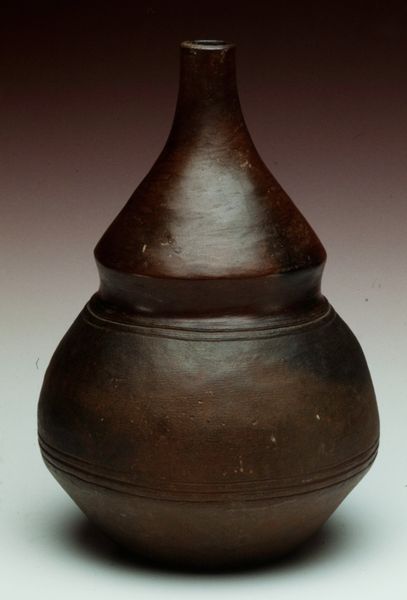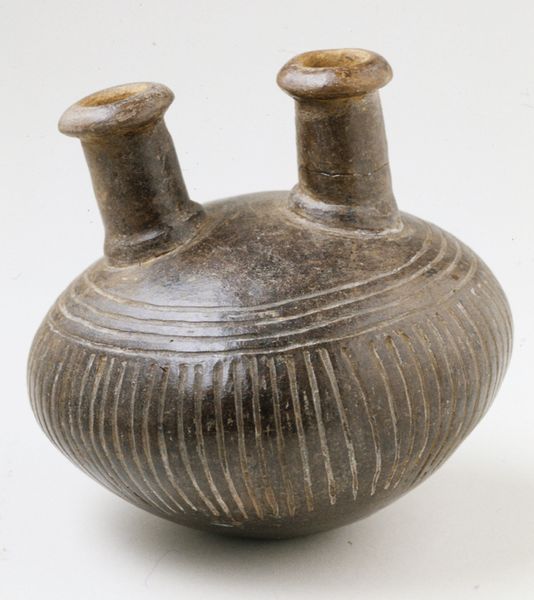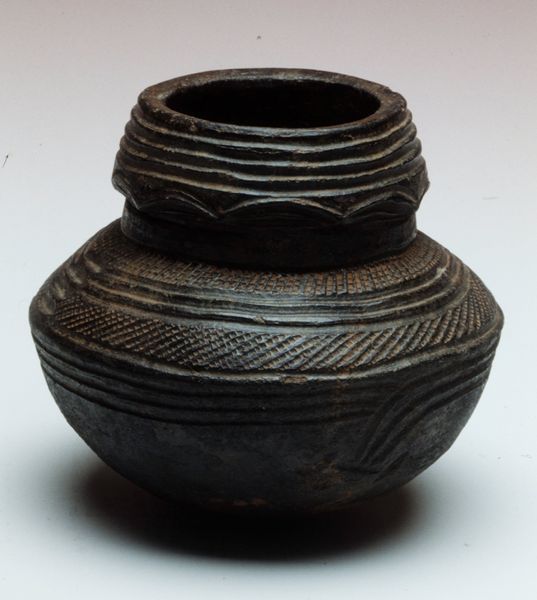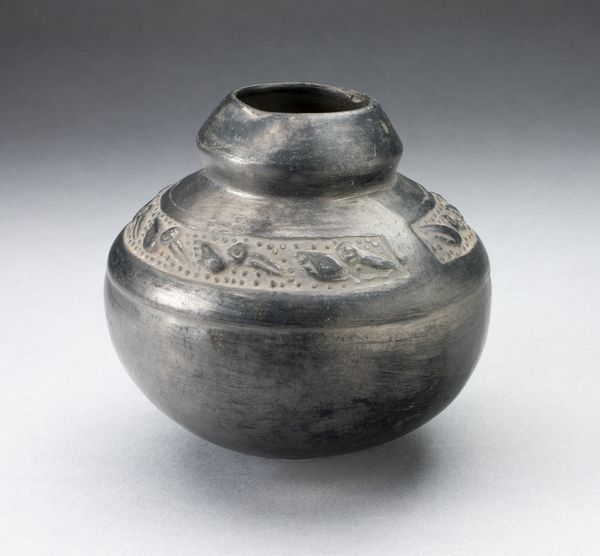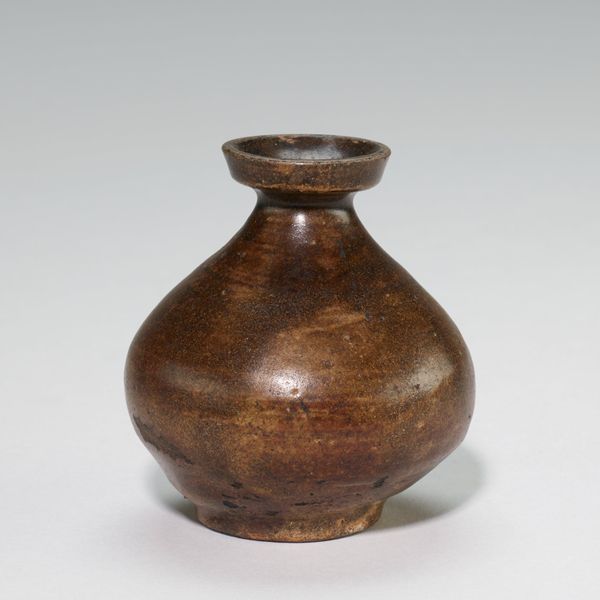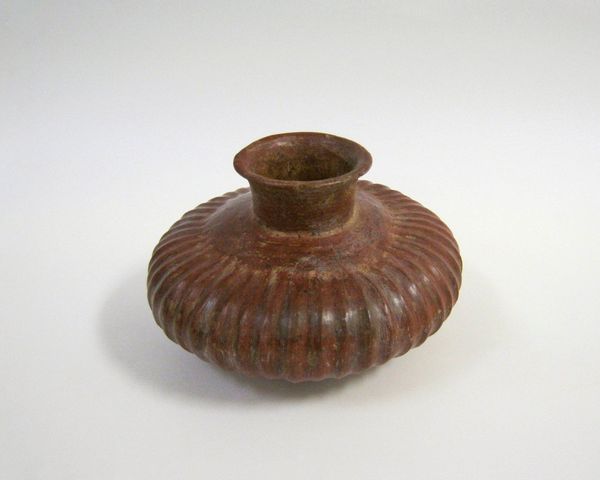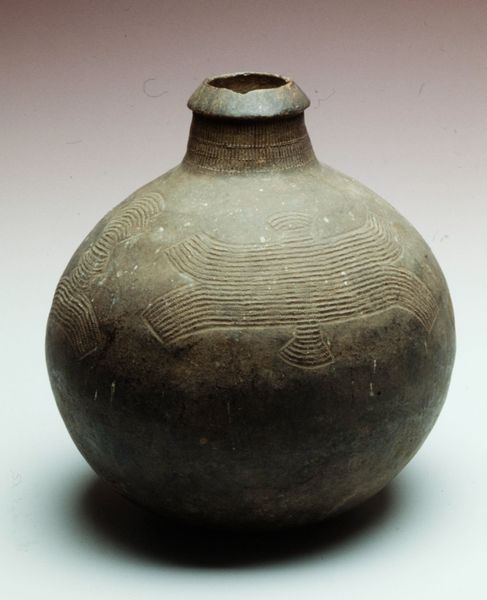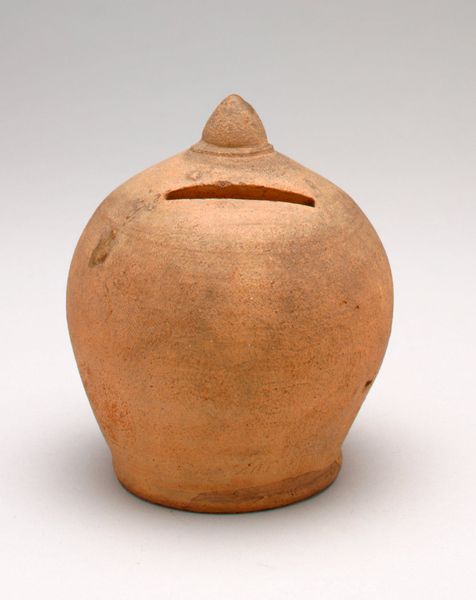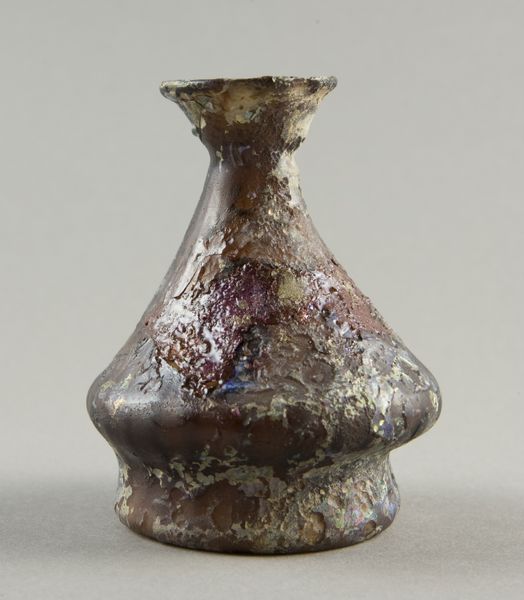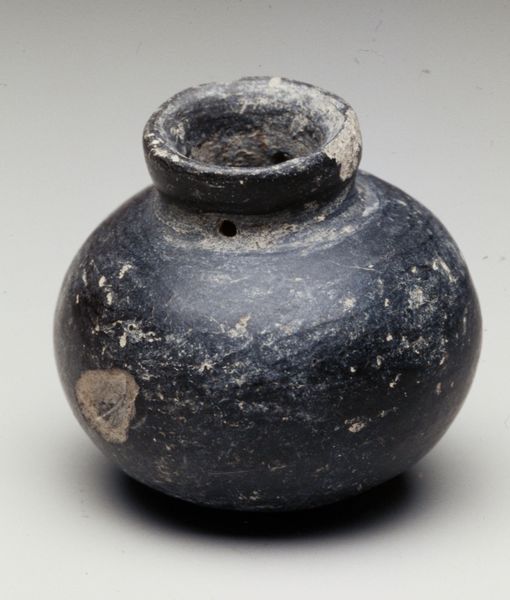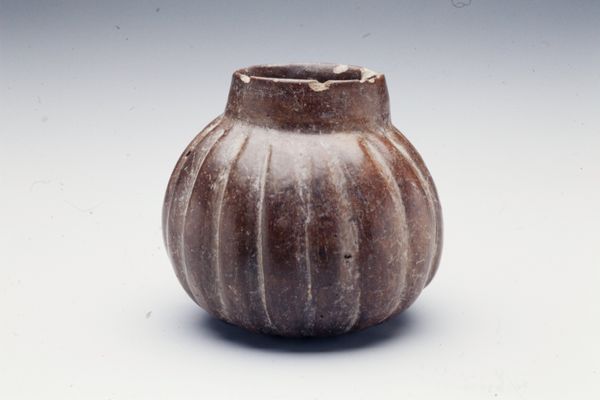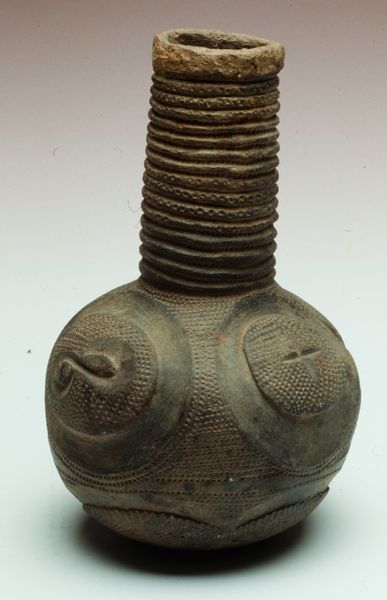
ceramic, earthenware, sculpture
#
african-art
#
ceramic
#
form
#
earthenware
#
sculpture
#
ceramic
#
decorative-art
Dimensions: 10 3/4 x 6 7/8 in. (27.3 x 17.46 cm)
Copyright: Public Domain
Curator: Let's consider this ceramic earthenware vase of probable 20th century origin, from the Solongo or Mboma people. Editor: It exudes a humble gravity. Its shape is unassuming but sturdy; the earthy color, perhaps the natural pigment of the clay, is somehow calming. Curator: Its creation likely emerges from distinct social and material conditions. Given the history of colonialism and trade in the region, considering the potential influences and impacts is key. Are these decorations purely aesthetic, or might they symbolize something within its cultural context? How do they relate to gender roles in ceramic production in that time period? Editor: I find myself drawn to the bands of recurring patterns - rows of tiny circles beneath the spout, followed by geometric patterns. Those details call to me, hinting at layered cultural significance beyond mere decoration. It reminds me of traditional patterns seen in textiles, perhaps even scarification marks, carrying meanings relating to identity, lineage, or ritual. Curator: Exactly! By interpreting those marks as visual signifiers we can ask how their meanings are interwoven with political, social, or even spiritual aspects of community life. Understanding this artistic heritage becomes about giving voice to cultural practices and beliefs otherwise overlooked in mainstream historical narratives. Editor: I keep coming back to its form, the subtle, swelling shape like an echo of organic things--gourds, seeds, fertility. The bulbous bottom grounds the piece, suggesting something primordial, while the intricate detail suggests a sophistication in understanding the world. Curator: Its formal choices could imply status, while challenging normative aesthetics established by colonial power structures. Approaching African art demands engaging actively with history to reveal unspoken meanings that challenge and enrich our understanding. Editor: Looking at the vase, I find that what resonates is not merely the cultural context or its material value but the powerful link to generations past. The cultural imprint tells stories of perseverance. Curator: Absolutely. This piece allows us to appreciate a layered history while interrogating unequal power relations across eras.
Comments
No comments
Be the first to comment and join the conversation on the ultimate creative platform.
